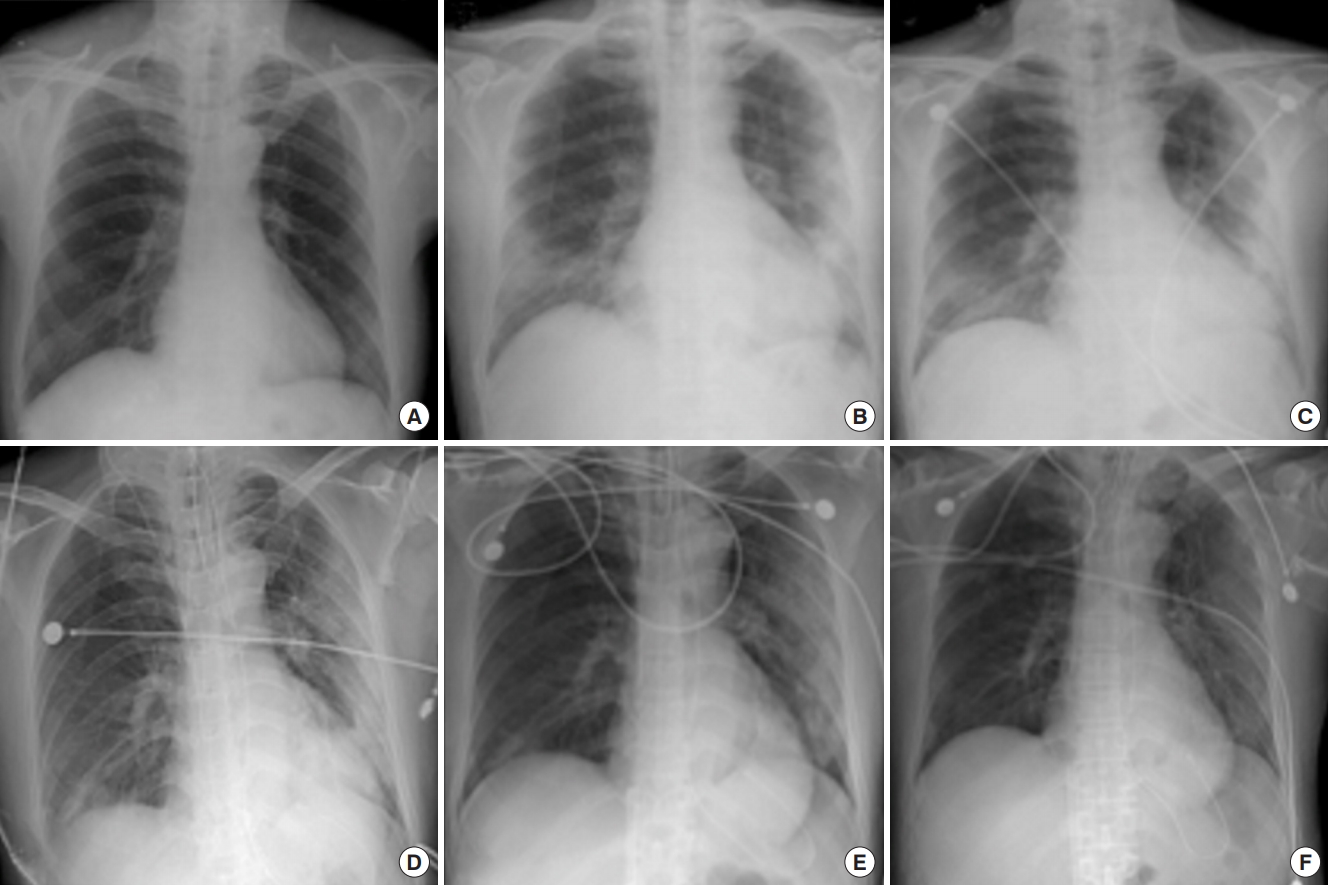Articles
- Page Path
- HOME > Acute Crit Care > Volume 35(3); 2020 > Article
-
Letter to the Editor
Infection Veno-arterial extracorporeal membrane oxygenation may be useful in critically ill COVID-19 patients with suspected cardiac injury -
Eunyoung Heo1
 , Se Jin Oh2
, Se Jin Oh2 , Hyun Woo Lee1
, Hyun Woo Lee1 , Jung-Kyu Lee1
, Jung-Kyu Lee1 , Deog Kyeom Kim1
, Deog Kyeom Kim1 , Sang-Won Park1
, Sang-Won Park1
-
Acute and Critical Care 2020;35(3):223-225.
DOI: https://doi.org/10.4266/acc.2020.00262
Published online: August 10, 2020
1Department of Internal Medicine, Seoul Metropolitan Government-Seoul National University Boramae Medical Center, Seoul, Korea
2Department of Thoracic and Cardiovascular Surgery, Seoul Metropolitan Government-Seoul National University Boramae Medical Center, Seoul, Korea
- Corresponding author Sang-Won Park Department of Internal Medicine, Seoul Metropolitan Government-Seoul National University Boramae Medical Center, Seoul National University College of Medicine, 20 Boramae-ro 5-gil, Dongjak-gu, Seoul 07061, Korea Tel: +82-2-870-2114 Fax: +82-2-870-3863 E-mail: hswon1@snu.ac.kr
Copyright © 2020 The Korean Society of Critical Care Medicine
This is an Open Access article distributed under the terms of the Creative Commons Attribution Non-Commercial License (http://creativecommons.org/licenses/by-nc/4.0/) which permits unrestricted non-commercial use, distribution, and reproduction in any medium, provided the original work is properly cited.
- 3,842 Views
- 72 Download
-
CONFLICT OF INTEREST No potential conflict of interest relevant to this article was reported
-
AUTHOR CONTRIBUTIONS
Conceptualization: EH, SWP. Data curation: EH, SJO, HWL, JKL. Formal analysis: EH, SJO, HWL, JKL. Methodology: EH, SJO, HWL, JKL, DKK. Project administration: DKK, SWP. Visualization: EH. Writing–original draft: EH. Writing–review & editing: all authors.
NOTES

- 1. Huang C, Wang Y, Li X, Ren L, Zhao J, Hu Y, et al. Clinical features of patients infected with 2019 novel coronavirus in Wuhan, China. Lancet 2020;395:497-506.ArticlePubMedPMC
- 2. Shi S, Qin M, Shen B, Cai Y, Liu T, Yang F, et al. Association of cardiac injury with mortality in hospitalized patients with COVID-19 in Wuhan, China. JAMA Cardiol 2020;5:802-10.ArticlePubMedPMCPDF
- 3. Santoso A, Pranata R, Wibowo A, Al-Farabi MJ, Huang I, Antariksa B. Cardiac injury is associated with mortality and critically ill pneumonia in COVID-19: a meta-analysis. Am J Emerg Med 2020;April 19; [Epub]. https://doi.org/10.1016/j.ajem.2020.04.052.Article
- 4. Zeng JH, Liu YX, Yuan J, Wang FX, Wu WB, Li JX, et al. First case of COVID-19 complicated with fulminant myocarditis: a case report and insights. Infection 2020;April 10; [Epub]. http://doi.org/10.1007/s15010-020-01424-5.Article
References
Figure & Data
References
Citations

- Figure
- We recommend
- Related articles
-
- Factors related to lung function outcomes in critically ill COVID-19 patients in South Korea
- Outcomes of extracorporeal membrane oxygenation support in pediatric hemato-oncology patients
- Prevalence of extracorporeal blood purification techniques in critically ill patients before and during the COVID-19 pandemic in Egypt
- Awakening in extracorporeal membrane oxygenation as a bridge to lung transplantation
- Comparison of critically ill COVID-19 and influenza patients with acute respiratory failure

 KSCCM
KSCCM
 PubReader
PubReader ePub Link
ePub Link Cite
Cite


